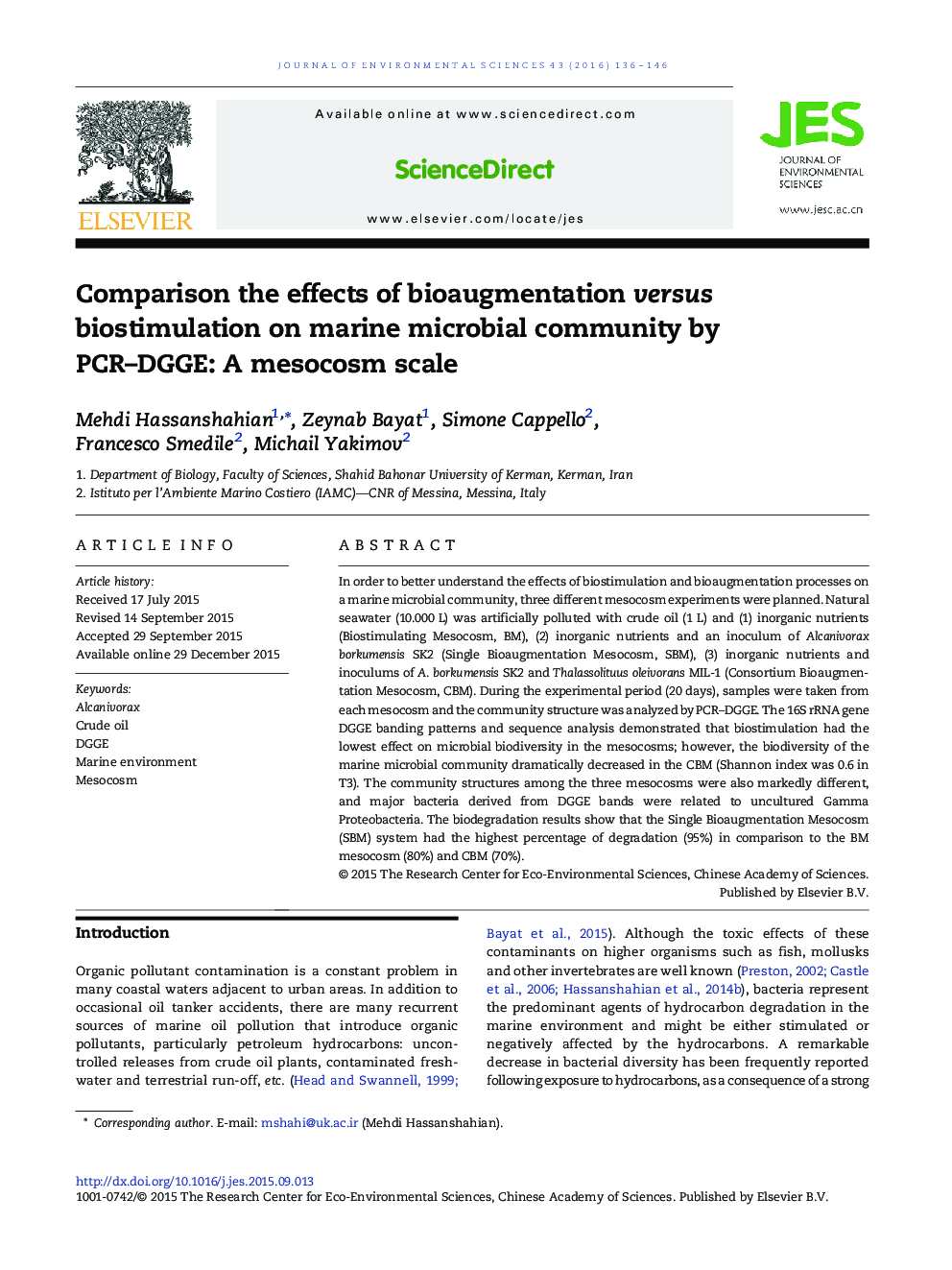| Article ID | Journal | Published Year | Pages | File Type |
|---|---|---|---|---|
| 4453665 | Journal of Environmental Sciences | 2016 | 11 Pages |
In order to better understand the effects of biostimulation and bioaugmentation processes on a marine microbial community, three different mesocosm experiments were planned. Natural seawater (10.000 L) was artificially polluted with crude oil (1 L) and (1) inorganic nutrients (Biostimulating Mesocosm, BM), (2) inorganic nutrients and an inoculum of Alcanivorax borkumensis SK2 (Single Bioaugmentation Mesocosm, SBM), (3) inorganic nutrients and inoculums of A. borkumensis SK2 and Thalassolituus oleivorans MIL-1 (Consortium Bioaugmentation Mesocosm, CBM). During the experimental period (20 days), samples were taken from each mesocosm and the community structure was analyzed by PCR–DGGE. The 16S rRNA gene DGGE banding patterns and sequence analysis demonstrated that biostimulation had the lowest effect on microbial biodiversity in the mesocosms; however, the biodiversity of the marine microbial community dramatically decreased in the CBM (Shannon index was 0.6 in T3). The community structures among the three mesocosms were also markedly different, and major bacteria derived from DGGE bands were related to uncultured Gamma Proteobacteria. The biodegradation results show that the Single Bioaugmentation Mesocosm (SBM) system had the highest percentage of degradation (95%) in comparison to the BM mesocosm (80%) and CBM (70%).
Graphical abstractFigure optionsDownload full-size imageDownload as PowerPoint slide
